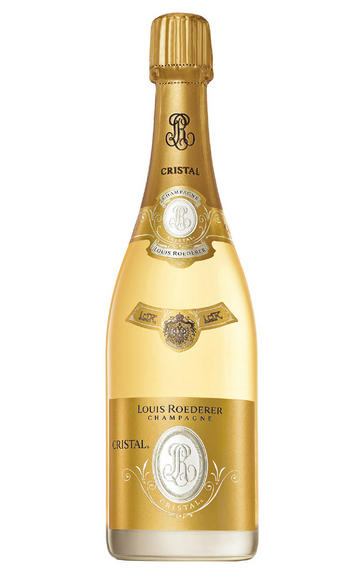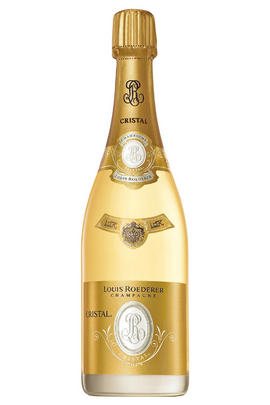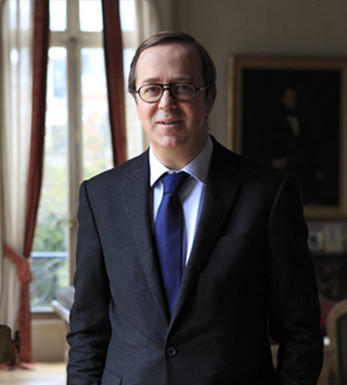
2000 Champagne Louis Roederer, Cristal, Brut

Critics reviews
The 2000 Cristal is gorgeous. Open-knit, creamy and totally seductive, the 2000 is a charmer. There are no hard edges or angular contours in this supple, open-knit Champagne. A gentle touch of reduction lingers on the close. The 2000 is an absolute delight today. “It was a very wet, stormy year with slow ripeness,” Lécaillon explains. “It was the most difficult Cristal I had blended up until that time, as the wines kept changing prior to blending.” Dosage was 10 grams per liter. Disgorged: 2007.
Drink 2023 - 2033
Antonio Galloni, Vinous (March 2023)
Quite an opulent nose. Lovely stage of evolution. Beautifully dense and tightly laced. Very complex and layered. Admirably persistent. This would be a great Cristal to drink now. Smoky.
57% Pinot Noir, 43% Chardonnay. Usually, Pinot Noir is Montagne de Reims rather than Aÿ, but in 2000 they had to use more Aÿ than usual. 10-15% malo.
Drink 2013 - 2027
Jancis Robinson, jancisrobinson.com (September 2017)
From a difficult vintage with destructive hailstorms and botrytis, the 2000 Cristal opens with an elegant and delicate bouquet with brioche, ripe apple, green olive and iodine aromas. Complex and very salty, with oyster and umami flavours, this is a generous and very long Cristal that is excellent with Japanese food, such as sashimi, for example, as chef de cave Jean-Baptiste Lécaillon said during the tasting in New York in November 2018.
Drink 2018 - 2040
Stephan Reinhardt, Wine Advocate (November 2018)
Elegant, taut wine with an array of nut, wholemeal and citrus flavours. Very complex. Exquisitely balanced.
Bob Campbell MW, The Real Review (April 2007
About this WINE

Louis Roederer
Founded in 1776, Louis Roederer is a family-owned, independent Champagne house with a well-deserved reputation for quality. It is managed by Frédéric Rouzaud, the seventh generation to be at the helm.
In 1876, Louis Roederer created the now-famous Cristal at the request of Alexander II. This once intensely sweet wine is now one of the most luscious, deeply flavoured champagnes available, with the '88, '89 and '90 among the greatest Cristals ever released.
Louis Roederer’s best-selling non-vintage blend for almost 40 years, Brut Premier, has recently been replaced by Collection 242. This new multi-vintage blend was created by Chef du Caves Jean-Baptiste Lécaillon in response to increasingly warm vintages. The cuvée aims to capture freshness and is based on a perpetual reserve which focuses on acidity and minerality.

Brut Champagne
Brut denotes a dry style of Champagne (less than 15 grams per litre). Most Champagne is non-vintage, produced from a blend from different years. The non-vintage blend is always based predominately on wines made from the current harvest, enriched with aged wines (their proportion and age varies by brand) from earlier harvests, which impart an additional level of complexity to the end wine. Champagnes from a single vintage are labelled with the year reference and with the description Millésimé.
Non-vintage Champagnes can improve with short-term ageing (typically two to three years), while vintages can develop over much longer periods (five to 30 years). The most exquisite and often top-priced expression of a house’s style is referred to as Prestige Cuvée. Famous examples include Louis Roederer's Cristal, Moët & Chandon's Dom Pérignon, and Pol Roger's Cuvée Sir Winston Churchill.
Recommended Producers : Krug, Billecart Salmon, Pol Roger, Bollinger, Salon, Gosset, Pierre Péters, Ruinart

Champagne blend
Which grapes are included in the blend, and their proportion, is one of the key factors determining the style of most Champagnes. Three grapes are used - Pinot Noir, Chardonnay and Pinot Meunier.
26% of vineyards in Champagne are planted with Chardonnay and it performs best on the Côtes des Blancs and on the chalk slopes south of Epernay. It is relatively simple to grow, although it buds early and thus is susceptible to spring frosts. It produces lighter, fresher wines than those from Burgundy and gives finesse, fruit and elegance to the final blend. It is the sole grape in Blancs de Blancs, which are some of the richest long-lived Champagnes produced.
Pinot Noir accounts for nearly 40% of the plantings in Champagne and lies at the heart of most blends - it gives Champagne its body, structure, strength and grip. It is planted across Champagne and particularly so in the southern Aube district.
The final component is Pinot Meunier and this constitutes nearly 35% of the plantings. Its durability and resistance to spring frosts make the Marne Valley, a notorious frost pocket, its natural home. It ripens well in poor years and produces a soft, fruity style of wine that is ideal for blending with the more assertive flavours of Pinot Noir. Producers allege that Pinot Meunier lacks ageing potential, but this does not deter Krug from including around 15% of it in their final blends.


Buying options
Add to wishlist
Description
The 2000 Cristal is gorgeous. Open-knit, creamy and totally seductive, the 2000 is a charmer. There are no hard edges or angular contours in this supple, open-knit Champagne. A gentle touch of reduction lingers on the close. The 2000 is an absolute delight today. “It was a very wet, stormy year with slow ripeness,” Lécaillon explains. “It was the most difficult Cristal I had blended up until that time, as the wines kept changing prior to blending.” Dosage was 10 grams per liter. Disgorged: 2007.
Drink 2023 - 2033
Antonio Galloni, Vinous (March 2023)
wine at a glance
Delivery and quality guarantee